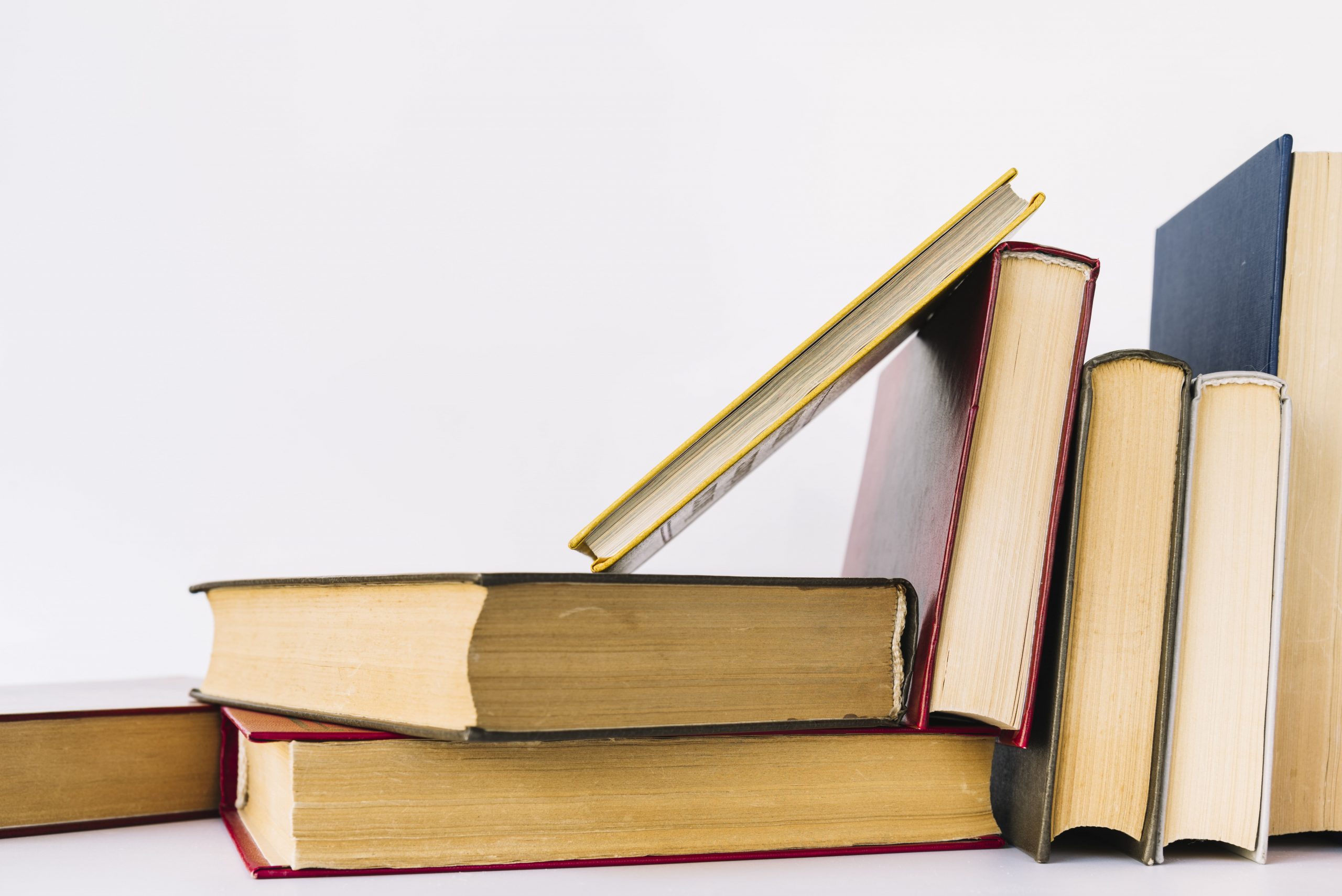While textbooks play an important role in students’ educational experiences, their accumulation on school shelves can be a nuisance for everyone involved. The sheer quantity of textbooks, out-of-date editions, and other materials can lead to mental overload and cluttered spaces. Beyond the psychological and physiological challenges, a hidden treasure trove of used textbooks can be worth much money and time.
With the advent of the “Textbook Detox” method, readers are encouraged to begin a life-altering quest to organize their textbook collections and discover their actual worth. Optimal textbook value can be achieved through systematic decluttering.
This article explores the challenges of traditional textbook accumulation while highlighting the organizational and financial advantages of textbook detoxification. It is high time that we ditch the current system of disorganized textbook storage and replace it with one that is more value-based and effective.
The Clutter Conundrum: Challenges of Traditional Textbook Accumulation

Image by Freepik
One of the common problems with traditional textbook accumulation is the tendency to hang onto out-of-date editions. These textbooks are no longer relevant to the classroom.
Shelves fill up with information that no longer fits into curricula as new editions appear and courses change. This accumulation clogs academic spaces and takes up physical space, making it difficult for teachers and students to find the resources that support their learning goals.
A master’s in education can give educators the knowledge and skills to address this clutter conundrum. Keep up with the most recent research and pedagogical approaches to assist educators in selecting textbooks.
The Impact of Clutter on Physical Space and Mental Well-being
Textbook clutter can harm people’s mental health and physical space. When shelves overflow, it can be chaotic, making it difficult to concentrate and find the needed items.
Sifting through numerous textbooks that lack relevance can cause cognitive strain, resulting in decreased productivity and unnecessary stress. Understanding the relationship between mental and physical spaces is crucial for resolving the clutter paradox and establishing an environment that promotes effective teaching and learning.
According to a Princeton University study, clutter can make concentrating on one task at a time difficult. In particular, they found it difficult to focus and finish tasks efficiently when the visual cortex is overloaded with irrelevant objects.2.
Financial Implications of Holding Onto Unused or Obsolete Textbooks
Holding outdated or unused textbooks can lead to financial consequences and create organizational challenges. New textbooks can still have value and can be recovered through donation or resale.
Maintaining an extensive collection of textbooks, particularly older editions, can be costly and strain finances. Recognizing the importance of decluttering and the potential financial value of textbooks can motivate individuals to begin the process of textbook detox. This process involves transforming textbooks, which may have been considered academic artifacts, into valuable assets.
The Art of Textbook Detox

Image by Freepik
Finding textbooks with ongoing value is crucial for a successful textbook detox. It requires a keen eye to identify these valuable resources. The usefulness of a textbook can be determined by its relevance to current or future courses, quality, and currency. To optimize their academic pursuits, readers can assess the educational value of each book in their libraries to determine which ones are beneficial and reduce their overall number.
Donation, Resale, and Recycling Options for Textbooks
Once textbooks have been selected for decluttering, individuals have various options available to maximize their value.
- Textbooks can be donated to regional libraries, educational institutions, or nonprofits to benefit individuals who can use them.
- Resale platforms offer an opportunity to recoup a portion of the original cost, especially for textbooks that have been well-maintained.
- Recycling options provide a sustainable way to dispose of textbooks that may not be able to be reused.
Consider the environmental and community impacts of each option to understand them.
Sustainable and Responsible Disposal Methods for Outdated or Damaged Books
Recyclable and ethical disposal techniques are crucial in managing textbooks that are no longer usable or have reached the end of their useful life. Recycling programs for paper and book materials are designed to ensure that these items are reused, thereby reducing the environmental impact of discarding textbooks.
Supporters of ecologically friendly disposal techniques can look into local recycling facilities or participate in book recycling initiatives. Accepting sustainability in textbook disposal means responsibly managing the end of a textbook’s life cycle, which aligns with broader environmental efforts and promotes a greener future.
Maximizing Textbook Value

Image by Freepik
Strategic selling on platforms that meet the demand for used educational materials is necessary to maximize the value of textbooks. Popular venues for textbook sales include online markets, specialized websites for textbook resale, and university bookstores.
Examining various platforms increases the possibility of finding buyers specifically looking for the textbooks in question by allowing one to reach a larger audience. Sellers can select the method that best suits their needs and objectives because every platform may have different features like peer-to-peer transactions, instant buyback options, or auction-style listings.
Book recycling is a viable solution for disposing of old textbooks in an environmentally friendly manner. Libraries and recycling centers can accept donated books. These books can then be repurposed or recycled into new materials. Repurposing old textbooks is a beneficial practice that reduces waste and offers the chance to give them new uses or transform them into something else.
The Importance of Timely Resale to Capture Maximum Value
Timeliness is essential when selling textbooks. Textbooks lose value over time as new editions are released or educational programs change. Sellers should list textbooks for resale when a course ends or a new edition is released to maximize returns. Textbook retailers should keep up with deadlines, industry advancements, and upcoming editions to optimize their market value. This feature makes it possible to time resales effectively.
For an even easier way to compare buyback offers and find the best resale value, the BookScouter book barcode scanner app lets you scan barcodes and instantly check prices from multiple vendors. This ensures you sell at the right time and for the highest possible return.
Tips for Negotiating with Bookstores and Online Platforms
To maximize textbook value, the ability to negotiate with bookstores and online platforms is helpful. People should be aware of the following when interacting with bookstores:
- Condition of the textbook
- Current market prices
- The store’s buyback policy
Online retailers often offer various benefits to their customers, such as free delivery or price matching. These benefits are often negotiable. Selling textbooks in bulk or bundling multiple textbooks together can increase the total transaction value through negotiation. Sellers who approach talks with a proactive and knowledgeable approach are likelier to get the highest value for their textbooks.
Digital Alternatives and Future-Ready Textbook Management

Image by Freepik
Examining e-learning platforms and digital textbook options is a critical first step toward future-ready textbook management in this age of rapid technological advancement. E-books, interactive digital textbooks, and e-learning platforms provide a dynamic and adaptable means of accessing educational materials.
You can find a wide range of digital resources on several platforms. Some popular options include
- Coursera
- Khan Academy
- Kindle
- Google Books
These platforms offer various types of educational materials and e-learning opportunities.
Benefits of Embracing Digital Textbooks for Cost Savings and Convenience
Digital textbooks offer several advantages, with convenience and cost savings being the most prominent. Digital textbooks are a cost-effective alternative to physical textbooks, as they are often cheaper and can help reduce the financial strain of purchasing extensive booklists or new editions.
About 75% of businesses have embraced digital transformation in printing operations. They use multifunction printers, which combine printing, scanning, copying, and faxing functions into a single machine.
Digital formats offer the advantage of portability, enabling users to store their entire collection of textbooks on a single device. With the help of digital annotation, highlighting, and searching, learning becomes more personalized and interactive.
Strategies for Transitioning from Physical to Digital Textbooks
A systematic and strategic approach is required to shift from paper to digital textbooks. Gradually introduce digital alternatives after first identifying courses or subjects that can be adapted for digital media.
Give teachers and students assistance utilizing digital resources and acquaint them with the selected e-learning platforms. For a smooth transition, promote cooperation and feedback.
A successful integration depends partly on establishing resources and clear guidelines for accessing and using digital textbooks. Take into account the environmental effect as well. Since digital textbooks use less paper and have less ecological footprint than traditional print materials, they align with sustainable practices.
Organizational Tips for a Future-Proofed Textbook Collection
Putting in place a systematic organizing strategy is the first step towards future-proofing a textbook collection. Organizing textbooks according to subject, course, or academic year facilitates accessibility and aids in the practical location of resources for teachers and students.
Consider allocating a particular space for textbooks, whether they are digital or physical, to maintain a clear and orderly learning environment. Examine and update organizational systems regularly for modifications to academic requirements, course structures, and technology developments.
Implementing Technology for Cataloging and Tracking Textbooks
Maintaining a future-proofed and well-organized textbook collection in the digital age requires using technology effectively. Develop a thorough textbook database by investigating digital cataloging resources like specialized inventory software or library management apps. Use barcoding or QR code technologies to guarantee accurate and timely tracking. Not only do these technologies improve textbook management efficiency, but they also offer insightful data on textbook usage. It supports making informed decisions about upcoming updates, purchases, or decluttering projects.
Creating a Sustainable System for Acquiring, Using, and Decluttering Textbooks
A deliberate approach to acquiring, using, and decluttering materials is necessary for a sustainable textbook management system. Give top priority to the use of textbooks that are relevant and durable for a variety of course lengths.
Encourage student practices like digital lending and textbook sharing to make the most of the available resources. Establish precise guidelines for what constitutes an outdated or irrelevant textbook to ensure a systematic decluttering process. Promote responsible textbook acquisition by emphasizing the importance of only buying curriculum-related textbooks. That will help to keep the learning environment clutter-free and sustainable.
Looking Ahead: Trends and Innovations in Textbook Management
New developments in technology and fashion are dramatically changing how people use textbooks. More and more educational materials are incorporating augmented reality (AR), virtual reality (VR), and artificial intelligence (AI) to create immersive and engaging learning experiences.
Adaptive learning platforms are revolutionizing the traditional one-size-fits-all approach by customizing content to meet the needs of each student. Another noteworthy trend is the emergence of Open Educational Resources (OER), which offer freely available, openly licensed educational materials that revolutionize the creation, sharing, and consumption of textbooks.
Anticipated Changes in the Textbook Industry and Their Impact on Management Strategies
Global events, shifting preferences, and educational technology are expected to impact the textbook industry. The transition to digital formats is expected to speed up, leading to a need to reevaluate traditional models that focus on print. The way people own textbooks is evolving because of the increasing popularity of inclusive access models, subscription-based services, and textbook rentals.
In response to industry changes, it is necessary to adapt textbook management strategies. It includes focusing on dynamic acquisition models, flexible licensing terms, and simplified methods for handling digital content.
Preparing for the Future of Textbooks and Learning Resources
Developing textbooks for the future requires a proactive approach to embracing new concepts and staying current with industry changes. Institutions and individuals need to stay updated on emerging technologies such as augmented reality (AR), virtual reality (VR), and artificial intelligence (AI).
These technologies can significantly enhance education and should be carefully considered for their potential benefits. OER and alternative textbook models have the potential to make education more accessible and equitable for both teachers and students. Textbook management techniques can effectively adapt to changing market trends by fostering a culture of flexibility and continuous education.
Wrapping Up: Optimizing Value and Creating a Future-Proofed Collection with Textbook Detox
As we come to the end of our exploration into textbook detox, it is clear that the advantages go well beyond simply making space in your body and mind. An effective textbook detox not only maximizes the financial value of unused materials but also supports sustainable practices and prepares people for the changing nature of education.
Organizing a collection of future-proof and streamlined textbooks is not only a matter of organization. It’s also a proactive move toward embracing the innovations and trends that will shape learning resources in the future. The approach to managing textbooks should change along with them. That is to ensure students receive an education that is both knowledge-rich and tailored to the needs of the digital age.


